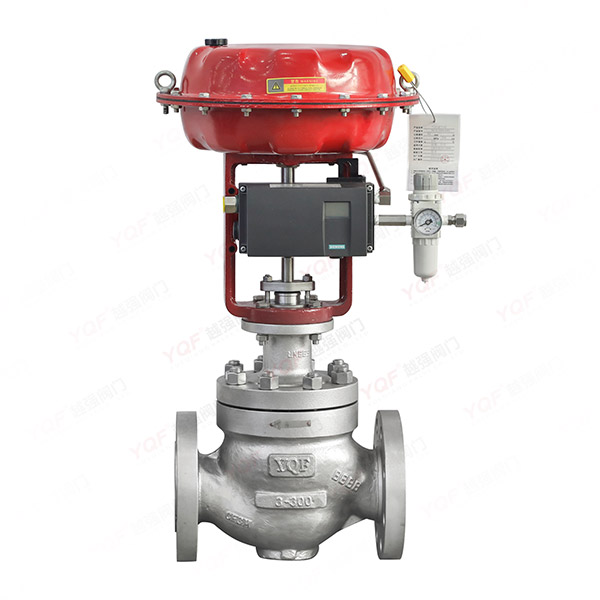Industry information
Industry
Industry information
Industry


A regulating valve, also known as a control valve, changes the fluid flow rate by receiving control signals from the regulating control unit and using power operation. A regulating valve is generally composed of an actuator and a valve. If based on the power used by the actuator, regulating valves can be divided into three types: pneumatic regulating valves, electric regulating valves, and hydraulic regulating valves. These include pneumatic regulating valves powered by compressed air, electric regulating valves powered by electricity, and electro-hydraulic regulating valves powered by the pressure of liquid media (such as oil). In addition, according to their functions and characteristics, there are hydraulic control valves, solenoid valves, electronic, intelligent, and on-site mainline regulating valves.
Selection of valve body type for regulating valve
There are many types of valve bodies for regulating valves, including straight through single seat, straight through double seat, angular, diaphragm, small flow, tee, eccentric rotation, butterfly, sleeve, spherical, etc. When making specific choices, the following considerations can be made:
(1) Valve core shape and structure
Mainly considering factors such as selected flow characteristics and unbalanced forces.
(2) Wear resistance
When the fluid medium is a suspension containing high concentrations of abrasive particles, the internal material of the valve needs to be hard.
(3) Corrosion resistance
Due to the corrosive nature of the medium, it is advisable to choose valves with simple structures.
(4) Temperature and pressure of the medium
When the temperature and pressure of the medium are high and vary greatly, valves with valve core and seat materials that are less affected by temperature and pressure changes should be selected.
(5) Prevent flash evaporation and cavitation
Flash evaporation and cavitation only occur in liquid media. In the actual production process, flash evaporation and cavitation can cause vibration and noise, shortening the service life of valves. Therefore, when selecting valves, precautions should be taken to prevent flash evaporation and cavitation.
Selection of actuator for regulating valve
In order to ensure the normal operation of the regulating valve, the accompanying actuator should be able to generate sufficient output force to ensure high sealing and valve opening.
For double acting pneumatic, hydraulic, and electric actuators, there is generally no reset spring. The magnitude of the applied force is independent of its direction of operation, therefore, the key to selecting an actuator is to determine the maximum output force and the rotational torque of the motor. For single acting pneumatic actuators, the output force is related to the valve opening, and the force appearing on the regulating valve will also affect the motion characteristics. Therefore, it is required to establish force balance throughout the entire range of valve opening.
Determination of the type of executing agency
After determining the output force of the actuator, select the corresponding actuator according to the requirements of the process usage environment. When there are explosion-proof requirements on site, pneumatic actuators should be selected. From the perspective of energy conservation, electric actuators should be selected as much as possible. If the adjustment accuracy is high, a hydraulic actuator can be selected. Such as speed regulation of transparent machines in power plants and temperature regulation control of catalytic reactors in refineries.
Selection of the operating mode of the regulating valve
The working mode of the regulating valve is only available when selecting pneumatic actuators, and its working mode is formed by the combination of the positive and negative actions of the actuator and the valve. There are four types of combination forms, namely positive positive (gas closing type), positive negative (gas opening type), positive negative (gas opening type), and negative negative negative (gas closing type). The regulating valve formed by these four combinations has two ways of action: gas opening and gas closing. The selection of the operating mode of the regulating valve is mainly considered from three aspects: a) process production safety; b) Characteristics of the medium; c) Ensure product quality and minimize economic losses.